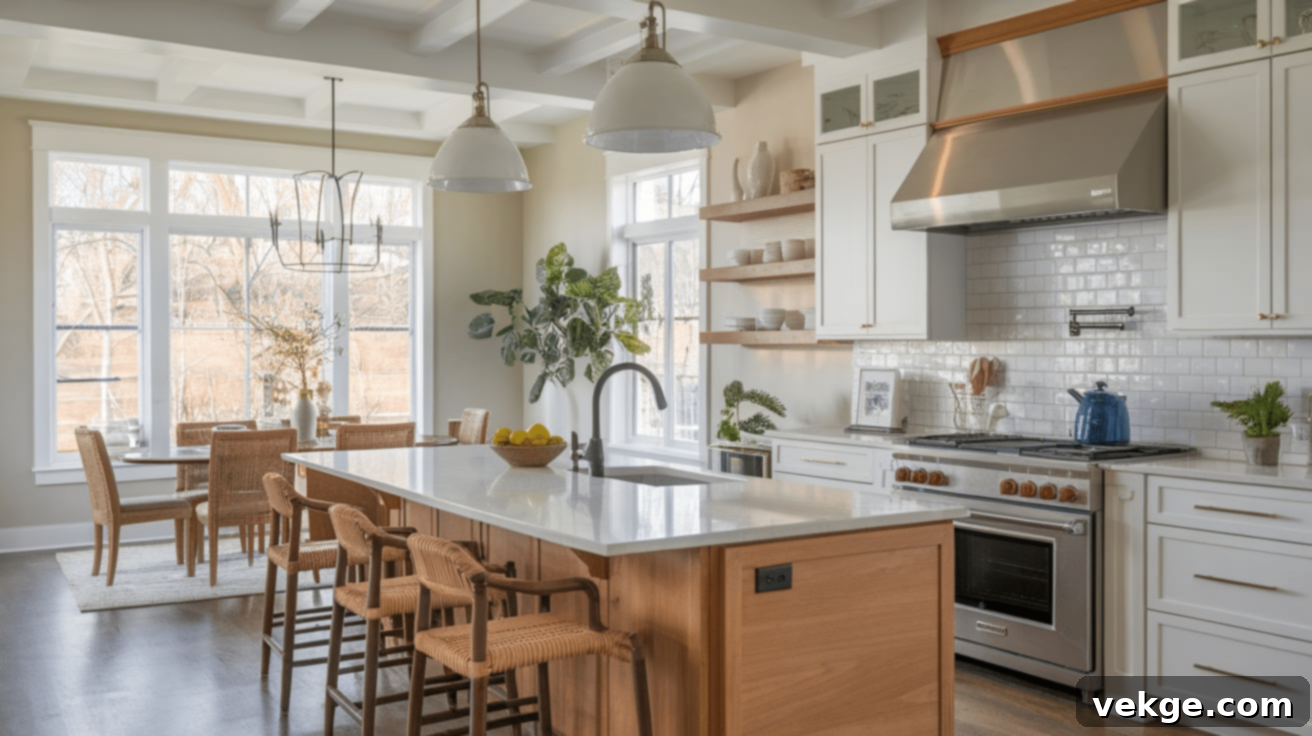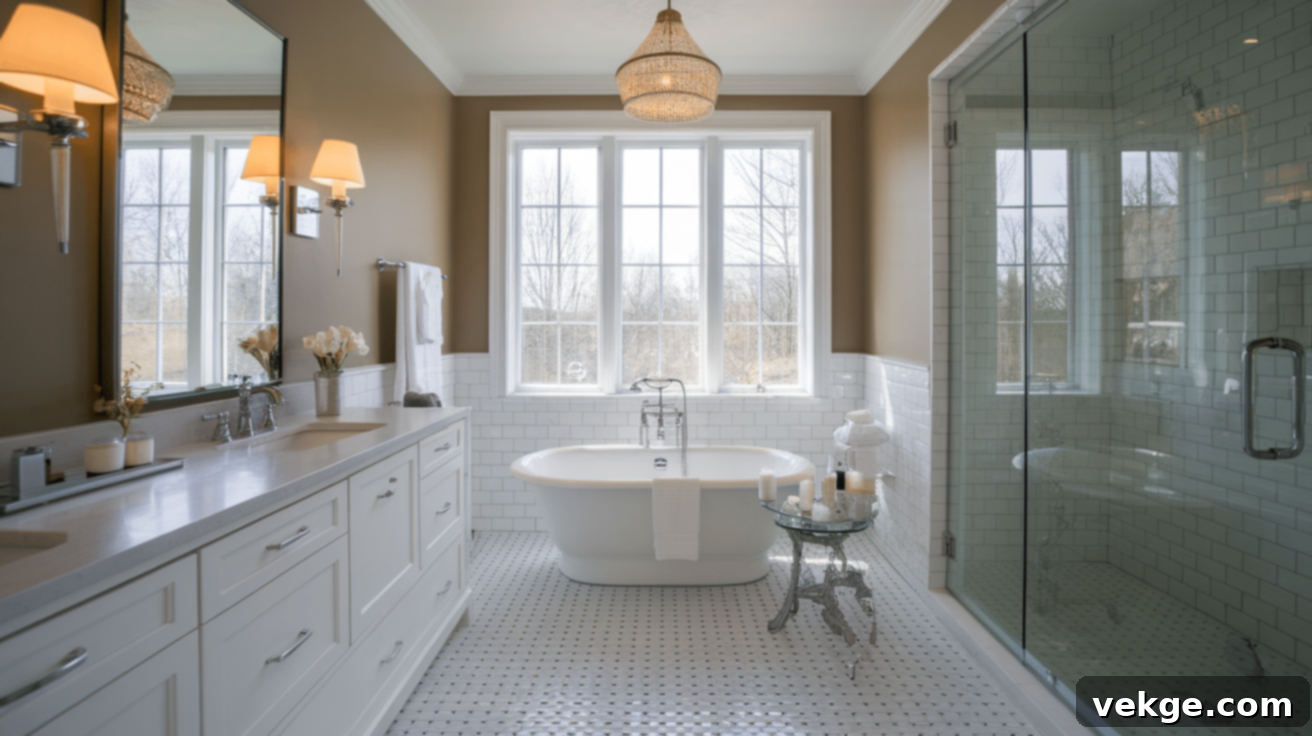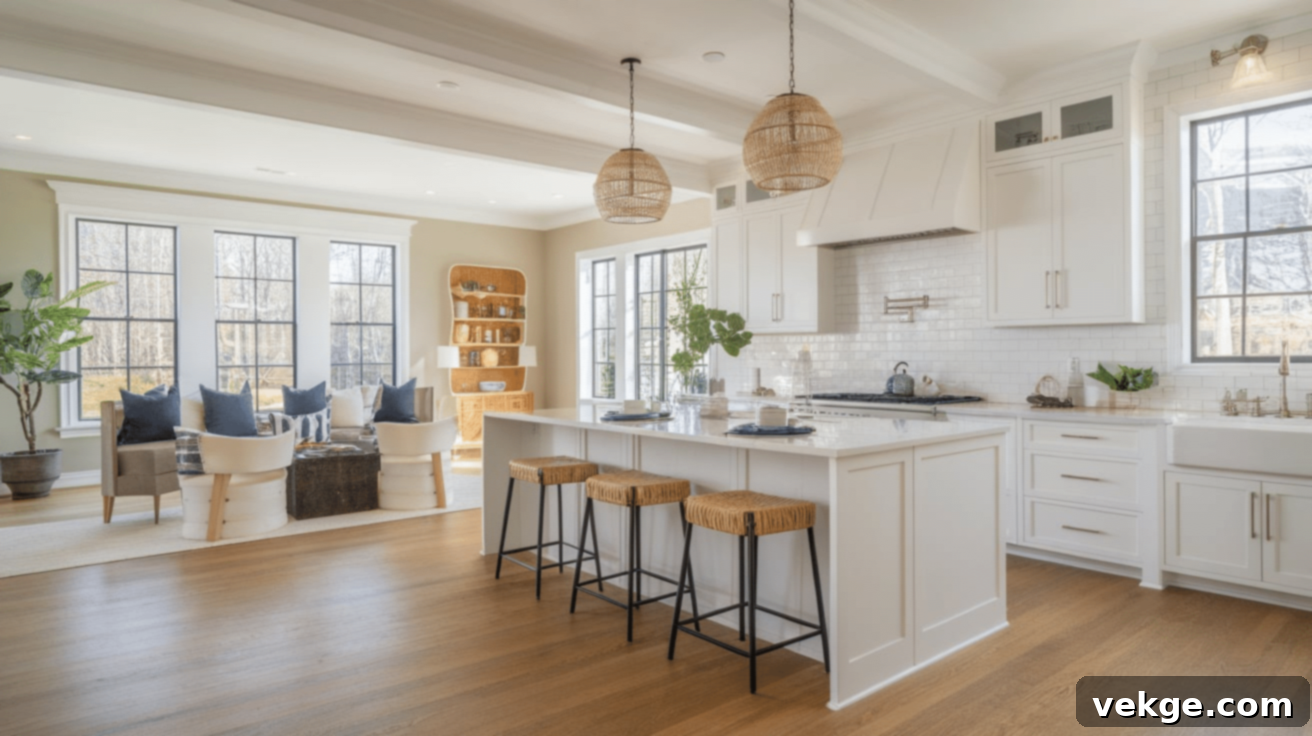Transform Your Home: A Comprehensive Guide to Remodeling Services
Are you envisioning a fresh look and improved functionality for your living space? Home remodeling services are your gateway to transforming that vision into a reality, combining your aspirations with expert craftsmanship.
This comprehensive guide delves into every critical aspect of home updates, from the initial spark of an idea to the final reveal. We’ll equip you with the knowledge to find trusted local contractors, accurately estimate costs, understand project timelines, and make informed decisions that align with your budget and lifestyle.
Whether you’re contemplating a complete home overhaul or focused improvements like a stunning kitchen renovation or a luxurious bathroom update, we’ve got you covered. You’ll learn essential steps such as thoroughly checking company backgrounds, effectively comparing multiple quotes, and identifying potential warning signs of less-than-ideal contractors.
We also cover key planning stages, strategic material selections, and common pitfalls to avoid throughout your renovation journey. By the time you finish this guide, you’ll feel prepared and confident to embark on your home remodeling project with clear direction and assurance in your choices.
Types of Home Remodeling Services
When considering a transformation for your home, the array of available options can seem vast. Home improvement companies offer a diverse range of services, each designed to meet specific needs, budget constraints, and aesthetic goals. Understanding these main types will help you define your project scope more clearly.
Full Home Remodeling
A full home remodel represents a significant undertaking, involving extensive changes to most or all areas of your house. This comprehensive approach is ideal for older homes needing a complete refresh or for homeowners looking to drastically alter their living environment to better suit modern lifestyles. A full remodel typically includes:
- Layout Reconfiguration: Moving or removing interior walls to create open-concept spaces or improve flow.
- System Updates: Modernizing crucial electrical and plumbing systems to enhance safety and efficiency.
- Flooring Replacement: Installing new flooring throughout the entire house for a cohesive and updated look.
- Room-by-Room Redesign: Overhauling all rooms, from living areas to bedrooms, to achieve a unified design aesthetic.
The primary benefits of a complete home remodel include making outdated homes more functional and comfortable for today’s living standards. It allows for the resolution of multiple structural and aesthetic issues simultaneously, often proving more cost-effective in the long run than undertaking separate, piecemeal projects over time.
Room-Specific Remodeling
Many homeowners prefer to focus their efforts and investments on updating just one or two specific rooms rather than the entire house. This targeted approach allows you to direct your budget towards the spaces you use most frequently, maximizing their impact and enjoyment. Room-by-room updates are also generally less disruptive to your daily life, as you can often continue living comfortably in other parts of your home while work is underway. Many reputable remodeling companies, such as Joshua’s Home Remodeling, specialize in delivering exceptional results for specific room transformations.
Kitchen Remodeling

Kitchen updates consistently rank among the most sought-after home improvements, offering significant returns in both functionality and property value. Homeowners typically prioritize new cabinetry and elegant counter surfaces, enhanced lighting solutions, state-of-the-art appliances, and improved layouts designed for more efficient cooking and smoother movement within the space. Leading companies like Top Home Remodeling Inc. often provide specialized kitchen-focused services, including complimentary design consultations to help you meticulously plan your dream culinary space.
Bathroom Remodeling

A well-executed bathroom renovation can dramatically enhance your daily routine and overall home comfort. Popular bathroom updates include installing new, modern showers or luxurious soaking tubs, optimizing storage solutions, upgrading fixtures and lighting for both aesthetics and functionality, and integrating water-saving toilets and faucets to promote eco-friendliness and reduce utility bills. Companies like Zion Home Remodeling boast over 15 years of experience in delivering high-quality bathroom transformations.
Energy-Efficient Remodeling

Investing in energy-efficient home remodeling is a smart financial decision that can lead to substantial savings on utility bills over time, while also contributing to a more sustainable environment. These updates often encompass installing advanced windows that effectively retain heat in winter and keep it out in summer, adding superior insulation in walls and attics, upgrading to modern, energy-efficient heating and cooling systems, and integrating smart home temperature controls for optimal climate management. When selecting a contractor, prioritize companies that emphasize energy-saving solutions for elements like windows, siding, roofing, and doors.
Beyond these, other specialized remodeling services include basement finishing, attic conversions, exterior remodels (siding, roofing, decks), and home additions. Each offers unique benefits and caters to different homeowner needs and property types.
Cost of Home Remodeling
A clear understanding of the financial aspects of home improvement projects is crucial for effective planning and for mitigating the risk of unexpected expenses. Home updates can range from minor cosmetic fixes to extensive complete makeovers, with prices fluctuating significantly based on several key factors.
Factors Influencing Cost
The total cost of your remodeling project is influenced by a combination of variables:
- Size of Your Home/Project Area: Larger spaces inherently demand more materials and labor, directly impacting overall costs. A whole-house remodel will naturally be more expensive than a single-room update.
- Scope of Work: The extent of the renovation dramatically affects your budget. A full gut renovation with structural changes will cost considerably more than superficial updates.
- Material Choices: This is a major cost driver. Opting for basic, standard-grade materials will help keep costs down, whereas selecting premium, custom, or high-end finishes (e.g., marble countertops, custom cabinetry, designer fixtures) will substantially increase expenses.
- Location: Geographical location plays a significant role, as labor costs, permit fees, and even material prices can vary widely from one region to another. Contractors in high cost-of-living areas typically charge more.
- Home’s Current Condition: The existing state of your home can hide costly surprises. Issues like outdated wiring, plumbing problems, mold, or water damage often become apparent only once demolition begins, requiring additional, unplanned repairs that can significantly inflate your budget.
Budgeting for Remodeling
Smart budgeting is the cornerstone of a successful and stress-free remodeling project. It begins with a meticulous plan and detailed quotes from multiple reputable contractors. Always allocate a contingency fund, typically 10-15% of your total budget, specifically for unexpected issues or desired changes during the project. This buffer is invaluable for handling unforeseen problems without derailing your finances.
When evaluating costs, consider the long-term value and increased property appreciation that updates bring, rather than focusing solely on immediate expenses. If external funding is necessary, explore various financing options such as home equity loans, lines of credit, or specialized renovation loans. A helpful guideline, often referred to as the “30% rule,” suggests limiting renovation costs to approximately 30% of your home’s current value. Adhering to this helps prevent overspending for your neighborhood’s market and significantly increases your likelihood of recouping your investment upon resale.
How to Choose the Right Home Remodeling Service
Selecting the ideal company for your home remodeling project is just as crucial as the design and planning phases themselves. A well-chosen contractor can lead to a seamless experience and results that exceed your expectations, while a poor choice might result in significant stress, budget overruns, and unsatisfactory outcomes. Here’s a detailed approach to finding the perfect home remodeling service for your unique needs.
Hiring a Remodeling Contractor
When searching for a professional to bring your home transformation to life, keep these key qualifications and considerations in mind:
- Experience and Longevity: Companies with a long operational history, such as Zion Home Remodeling (with over 15 years in business) or Joshua’s Home Remodeling (over 10 years), often possess a proven track record, extensive expertise, and a strong reputation for reliability and quality.
- Proper Licensing and Insurance: Always verify that any contractor you consider holds the necessary licenses to operate legally in your area. Equally important, ensure they carry adequate liability insurance to protect your property and workers’ compensation insurance to cover their team in case of accidents. Request proof of both.
- Clear Communication: Effective communication is paramount for a successful project. Good contractors explain complex processes in simple, understandable terms, provide regular updates, and are responsive to your questions and concerns throughout the entire project lifecycle.
- Project Focus and Specialization: Some companies excel at specific types of work. For instance, Top Home Remodeling Inc. is widely recognized for its expertise in kitchen and bathroom updates, demonstrating specialized skills in these high-impact areas. Choosing a specialist for your particular project can often lead to superior results.
Checking Reviews and Ratings
Customer feedback offers invaluable, real-world insights into what it’s truly like to work with a particular company. Leverage these resources:
- The Better Business Bureau (BBB) is an excellent resource for finding trusted home remodeling contractors. You can check their official ratings, review customer complaints, and see how effectively companies have resolved past issues.
- Online platforms like Houzz provide a visual feast of completed projects, coupled with detailed customer comments and testimonials about their experiences. This allows you to see their work firsthand and read about client satisfaction.
- Star ratings on various review sites offer a quick indicator of overall customer satisfaction. Companies like Joshua’s Home Remodeling and Top Home Remodeling Inc., both maintaining perfect 5.0 ratings from dozens of reviews, stand out as reliable choices. When reading feedback, pay close attention to comments regarding punctuality, job site cleanliness, the professionalism of the crew, and how effectively companies managed any challenges that arose during projects.
Getting Multiple Estimates
Savvy homeowners consistently gather several quotes before committing to a decision. Obtaining at least three detailed estimates is a smart strategy that helps you identify pricing that might be excessively high or suspiciously low. Remember, the cheapest bid is rarely the best value. It’s crucial to thoroughly review what is explicitly included and excluded in each quote, ensuring a clear understanding of the scope of work.
Reputable contractors will be able to transparently explain any differences in their pricing compared to competitors. Always insist on receiving all quotes in writing, with a clear and itemized breakdown of labor costs, material expenses, permit fees, and any other charges. As advised by industry giants like Home Depot, which also offers remodeling services, detailed estimates are vital for preventing misunderstandings, avoiding hidden fees, and averting budget surprises later in the project.
The Remodeling Process
Understanding the typical stages of a home renovation project is key to setting realistic expectations and ensuring a smooth, efficient workflow. While specific details may vary depending on the project’s size and complexity, most professional home remodeling companies adhere to a similar structured process.
Step-by-Step Guide
Step 1: Initial Meeting and Planning

The journey begins with an initial consultation where you share your vision, needs, and preliminary budget with the contractor. Esteemed companies like Top Home Remodeling Inc. often start with this fundamental step. During the subsequent home inspection, the contractor will meticulously assess your current space, identify any potential structural or hidden issues, and take precise measurements. A candid discussion about your budget is paramount; being open about what you can spend allows the contractor to suggest realistic options within your financial parameters. This step culminates in the creation of a written preliminary plan, outlining the proposed work, estimated costs, and a breakdown of labor and materials.
Step 2: Design and Selection

For larger or more complex projects, the design phase is crucial. This might involve creating detailed floor plans, 3D renderings, and architectural drawings to visualize the transformed space. Home Depot, for example, offers free design services, particularly helpful for kitchen updates, assisting those unsure where to begin. Following design, you’ll move to material selection, choosing everything from cabinets, flooring, paint colors, and light fixtures to plumbing fixtures that align with your aesthetic vision and budget. This stage often takes longer than anticipated due to the vast array of choices and decision-making involved, so build extra time into your schedule. Finally, you’ll review and sign a comprehensive contract that encapsulates all project details, finalized costs, payment schedules, and a clear protocol for handling any change orders during the renovation.
Step 3: Getting Permits and Prep Work

Securing building permits is a critical prerequisite. Your contractor will typically handle all necessary applications and approvals from local municipal offices. This process can range from a few days to several weeks, depending on local regulations and the complexity of your project. Concurrently, it’s wise to order materials with long lead times, as custom items like cabinetry, special tiles, or unique fixtures might require weeks or even months to arrive. Before physical work commences, prepare your home by clearing out the project area, protecting adjacent living spaces from dust and debris, and planning how you will manage daily life, especially for essential areas like kitchens or bathrooms that will be temporarily out of commission.
Step 4: The Building Phase

The construction work schedule typically runs on weekdays during standard business hours, though some companies may offer more flexible timing to accommodate client needs. Before any demolition or construction begins, the team will meticulously protect the untouched areas of your home and set up a clean, organized workspace. Throughout this phase, reliable contractors maintain consistent, transparent communication about progress, anticipated next steps, and any potential adjustments. This commitment to professionalism and efficiency is often reflected in positive customer feedback. Local building officials will likely conduct inspections at key stages throughout the project to ensure all work adheres strictly to building codes, safety standards, and approved plans.
Step 5: Final Steps and Cleanup

As your project approaches completion, you and your contractor will perform a thorough walk-through to create a “punch list” – a document detailing any small items still needing attention, adjustments, or touch-ups. Following this, the remodeling team should perform a comprehensive cleanup, removing all construction debris and leaving your home pristine and ready for immediate use. As one satisfied Zion Home Remodeling customer attested, “They worked very diligently and finished right on time, with no complications,” underscoring the value of a well-managed final phase. A final walk-through allows you to inspect all completed work, ensure everything meets your satisfaction, and ask any remaining questions. Before formally concluding the project, collect all warranties for materials and labor, care instructions for new installations, and official permits for your records. These documents are invaluable for future maintenance, potential issues, or resale.
Typical Timeline
The duration of a remodeling project is directly proportional to its scope and complexity:
- Small room update (e.g., powder room, small laundry room): Typically 2-3 weeks.
- Full kitchen or bathroom renovation: Generally 4-8 weeks, depending on material lead times and design complexity.
- Multiple rooms or a whole-house remodel: Can span 3-6 months or considerably longer for very extensive structural changes or large homes.
It’s crucial to factor in potential delays caused by unexpected issues discovered during demolition, material delays from suppliers, or changes you might request to the plans. Working with highly-rated companies known for their efficient project management, as often highlighted in positive customer reviews, can significantly help keep your project on schedule.
Finding Local Home Remodeling Services
Locating the right home remodeling company for your specific project doesn’t have to be an arduous task. With a combination of reliable online resources and traditional methods, you can efficiently identify skilled local professionals who align with your needs, aesthetic preferences, and budget.
Using Online Platforms
The internet has revolutionized the process of finding local remodeling companies, making it quick and straightforward. A simple online search often reveals highly-rated businesses in your immediate area, such as Joshua’s Home Remodeling, which boasts an impressive 5.0-star rating from 78 reviews, or Top Home Remodeling Inc. for specialized services.
- Better Business Bureau (BBB): As previously mentioned, the BBB website is an indispensable resource. It lists accredited and thoroughly vetted contractors, offering you an added layer of confidence in your selection by detailing their complaint history and resolution effectiveness.
- Home Improvement Stores: Major retailers like Home Depot frequently offer their own comprehensive remodeling services, often backed by strong customer ratings (e.g., 4.1 stars from over 125,000 reviews for their various services). They provide convenience and often include design assistance.
- Specialized Platforms: Websites like Houzz (as mentioned earlier) and Angie’s List (now Angi) are dedicated to connecting homeowners with contractors, featuring portfolios, reviews, and detailed company profiles.
- Online Forums and Social Media: Local community groups on platforms like Facebook or dedicated online forums can be excellent sources for word-of-mouth recommendations, allowing you to tap into the real experiences of your neighbors and find well-liked local companies.
DIY vs. Hiring Professionals
Deciding whether to tackle a project yourself (DIY) or hire professionals is a critical choice that impacts cost, time, and quality:
- DIY Advantages: For smaller projects such as painting, minor fixture replacements, or basic repairs, a DIY approach can significantly save money on labor costs. Resources like This Old House offer a wealth of helpful DIY guides for those inclined to undertake certain tasks.
- Professional Advantages: However, larger, more complex jobs almost invariably require the expertise of skilled professionals. Expert teams bring the right specialized tools, extensive knowledge of building codes and permit requirements, and invaluable experience. They also work more efficiently and safely, which is particularly crucial for projects involving intricate plumbing, electrical work, or structural changes, such as kitchen and bathroom updates. As a review for Zion Home Remodeling highlights, professionals “worked very diligently and finished right on time, no complications,” showcasing the immense value and peace of mind that good contractors bring to complex home transformations. Entrusting significant projects to professionals often ensures higher quality, compliance with regulations, and a smoother, less stressful experience.
Home Remodeling Tips and Best Practices
Even with the most capable contractors, a home remodeling project yields the best results when you, as the homeowner, are prepared with knowledge and clear plans. Implementing these tips and best practices can significantly contribute to a smoother, more successful project from inception to completion.
Planning Your Remodel
- Define Clear Goals: Start by setting explicit, detailed goals for your project. Put them in writing. Clearly distinguish between “needs” (essential functional requirements) and “wants” (desirable features). This distinction is vital for making pragmatic decisions when budget constraints inevitably arise.
- Financial Buffer: Always allocate a contingency fund of 10-20% beyond your initial budget for unforeseen costs or desired changes during the project. This prevents financial stress.
- Realistic Timeline: Work closely with your contractor to establish a realistic project timeline, but maintain flexibility. Experienced contractors, like Top Home Remodeling Inc., excel at balancing project speed with the unwavering commitment to quality craftsmanship.
- Detailed Scope of Work: Ensure your contract includes a highly detailed scope of work that leaves no room for ambiguity. This helps prevent misunderstandings down the line.
Choosing Materials
- Beyond Price Tag: When selecting materials, look beyond just the initial price. Consider factors like durability, long-term maintenance requirements, and how well they suit your lifestyle.
- Value vs. Cost: As exemplified by Power Home Remodeling’s focus on energy-saving products, some materials may have a higher upfront cost but deliver substantial savings over their lifespan through reduced energy consumption or lower maintenance.
- See Samples In-Person: Whenever possible, inspect and physically touch material samples. Retailers like Home Depot offer this option, often alongside their free design assistance, allowing you to better visualize how materials will look and feel in your home.
- Longevity and Style: Opt for materials that offer a timeless appeal rather than fleeting trends, especially for costly installations like flooring, cabinetry, and countertops, to ensure your remodel remains aesthetically pleasing for years to come.
Avoiding Common Remodeling Mistakes
- Thorough Contractor Vetting: The single most common and costly mistake is hiring the wrong contractor. Always prioritize checking extensive contractor reviews, licenses, and insurance before making a hiring decision. As highlighted, companies with strong ratings like Joshua’s Home Remodeling (5.0 from 78 reviews) are a safer bet.
- Minimizing Scope Creep: Avoid making frequent or significant changes to the project plans once work has commenced. Such alterations, often termed “scope creep,” can dramatically drive up costs, extend timelines, and introduce complications. Establish clear lines of communication with your team from the outset to address any concerns proactively.
- Don’t Chase the Lowest Bid: While cost is important, remember that the cheapest bid rarely translates into the best results or long-term value. An unusually low quote often signifies cut corners, subpar materials, or hidden costs that will surface later. Prioritize value, quality, and a contractor’s reputation over simply the lowest price.
- Neglecting Permits: Failing to obtain necessary permits can lead to fines, project stoppages, and even requirements to tear down completed work. Always ensure your contractor handles all permit applications.
Conclusion
Embarking on a home remodeling journey is an exciting and rewarding endeavor that can breathe new life into your living spaces while significantly enhancing your property’s value. By investing the time to identify the right professional partners, meticulously planning every detail, and making astute choices regarding materials and design, you lay a solid foundation for a successful and gratifying project.
Remember, reputable companies, like those consistently praised in customer reviews, bring invaluable experience and expertise that can help you navigate challenges and steer clear of costly mistakes. Whether your ambition is to refresh a single room or undertake a comprehensive transformation of your entire house, collaborating with skilled and trustworthy professionals simplifies the process, ensures compliance with standards, and ultimately delivers superior, lasting results.
Armed with the detailed tips, insights, and comprehensive information provided in this guide, you are now well-prepared and confident to confidently initiate your home improvement plans and realize the home of your dreams.
Frequently Asked Questions
Is It Cheaper to Build or Remodel a House?
Generally, remodeling an existing house is more cost-effective than building a new one from the ground up, especially when the existing structure and major systems (foundation, framing, roofing) are in good condition. New construction involves significant expenses for land, new foundations, full structural builds, and extensive utility connections. Remodeling often leverages existing infrastructure, saving on these initial substantial costs, though extensive remodels with structural changes can narrow this gap.
What is the Best Time of Year for Remodeling?
For indoor remodeling projects like kitchen or bathroom updates, any time of year can work, as they are less dependent on weather. However, fall and winter often present unique advantages. During these seasons, contractors may have lower demand, potentially leading to more competitive rates and a more focused workforce. Spring and summer tend to be peak times, especially for exterior projects (roofing, siding, landscaping), making it harder to book contractors and potentially incurring higher costs. Planning major indoor renovations during the off-peak seasons can sometimes yield better scheduling and pricing opportunities.
How long does a typical home remodeling project take?
The timeline varies greatly depending on the scope. Small projects (e.g., painting, minor repairs) might take days. A single room remodel (like a bathroom or kitchen) typically takes 4-8 weeks. Whole-house renovations can easily span 3-6 months or more. Delays can occur due to permit approvals, material lead times, unforeseen structural issues, or client-requested changes.
What permits do I need for home remodeling?
Permit requirements depend on your local municipality and the nature of your project. Minor cosmetic changes generally don’t require permits, but any work involving structural alterations, plumbing, electrical, or significant changes to the building’s envelope (e.g., adding windows, expanding rooms) will almost certainly need permits. Your contractor should handle all permit applications and ensure compliance with local building codes.
How do I manage living in my home during a remodel?
For major renovations, especially kitchens or bathrooms, living in your home can be challenging. Plan for temporary setups (e.g., a makeshift kitchen in another room), protect unaffected areas from dust with plastic sheeting and zip walls, and maintain open communication with your contractor about daily schedules and noise levels. For very extensive remodels, some homeowners opt for temporary accommodation.
